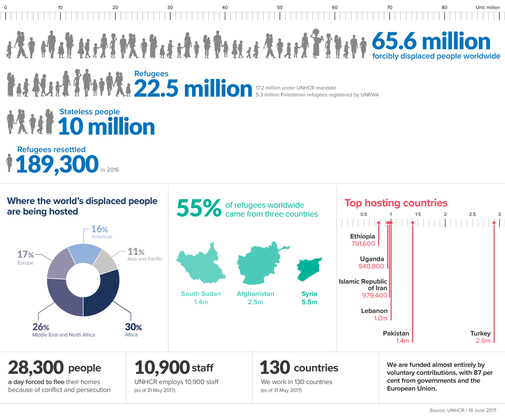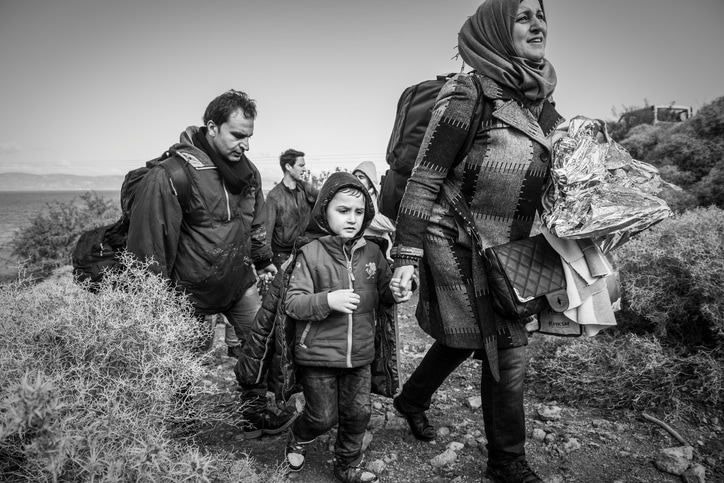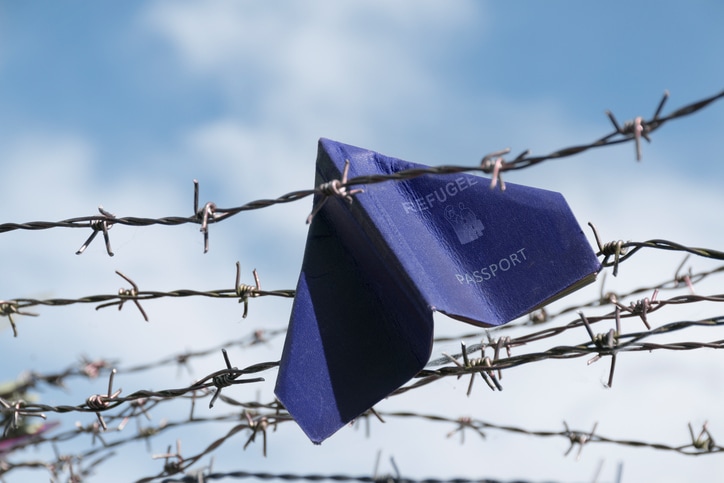"We can't deter people fleeing for their lives. They will come. The choice we have is how well we handle their arrival, and how humanely."
-Antonio Guterres, Secretary-General of the United Nations
Friends in Need: Refugees Are People, Not Problems
|
According to the most recent United Nations figures, there are currently 65 million people forced to flee their home-- the highest level in human history. A refugee is someone who has been forced to flee his or her country because of persecution, natural disaster, war, or violence. The following module will provide the tools, knowledge, and ready-to-use materials to help students understand how one becomes a refugee, why it is important to welcome them, and how to take action to stand up for their humanity. This lesson draws on both the modern struggle refugees are undergoing, as well as provides historical parallels.
|
Step 1: Hook (5 minutes)
|
In this activity, students will imagine what it would be like if they had thirty minutes or less to gather their personal possessions in order to flee the country from war, violence, or persecution. Ask students to write down 5 items that they would take with them on their journey, if they knew they might never be able to return home.
After the class has had a couple minutes to write down their 5 items, open up the class to discussion and allow students to share which objects they picked and why. Start a list on the board of objects picked for the journey and see how many students had similar objects. Would leaving so much behind, including their home, would be hard for them? What do their choices say about their priorities? |
Step 2: Videos and Other Teacher Resources (10 minutes)
|
You can follow up on your class discussion by watching the trailer of Salam Neighbor (2:22). You can also encourage your class to watch, show, or host a screening of the entire award winning documentary (1 h 15 min.). Your students can also complete their own interactive journey out of Syria on BBC's site. Follow up by drawing parallels between refugee crises of the past and the present. Students can also view the impact that refugee crises have had on the world from 1975-2015 with this interactive timeline that includes the numbers of refugees in comparison with the world's population. Another interactive activity allows students to trace the paths of refugees out of war-torn Europe and also connects back to today's refugee crisis.
Making it personal: Students can take a 360 degree, Virtual Reality tour of a Syrian refugee camp to see what it would be like to live in one. You can also find more material about Syrian refugees here. Students can also read and recite the poem "Home" by Warsan Shire, which describes the refugee experience. |
Step 3: Standards-Based Exercise (15 minutes)
|
Have students write a story about an immigrant or refugee they know, using standards-based vocabulary available here. If the students are unsure if they know any immigrants or refugees, ask them to think about their own family history and when their relatives came to the country and write about this.
Another way to bring the experience of refugees down to a personal level is to have students complete this exercise, where they examine the stories of various refugees on this website. |
Step 4: What Can Students Do? (10 minutes)
|
Often times people feel that human rights issues, such as the plight of refugees, are too large for them to do anything about, and this is especially true for students and young people. We encourage teachers to help students take action by empowering them to:
|
Additional Resources
|
AFT Resources
|








